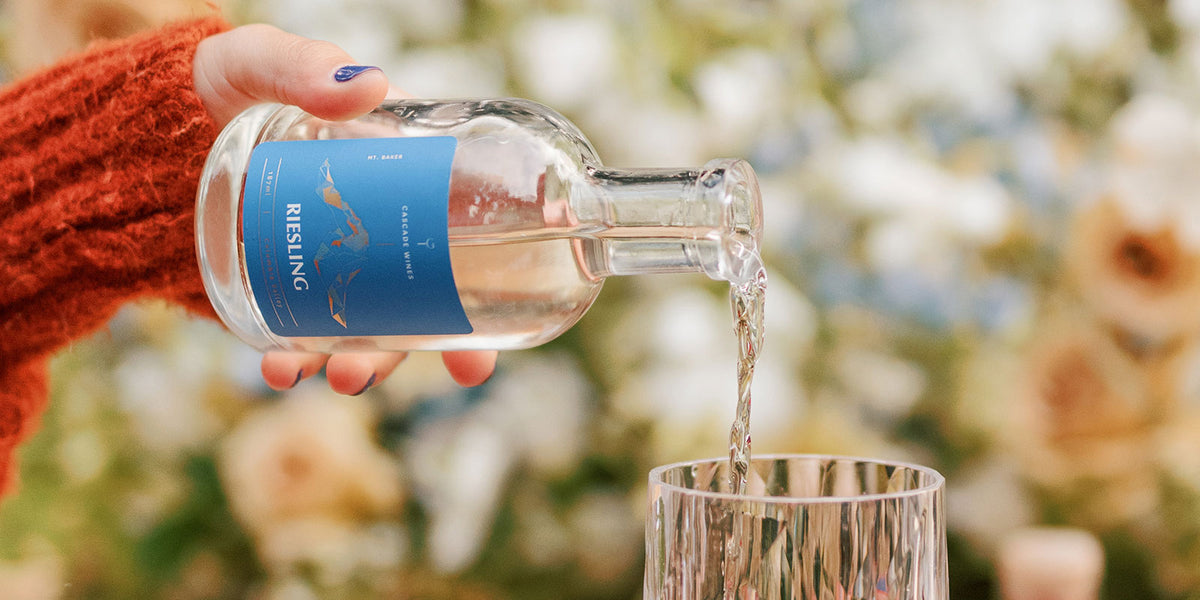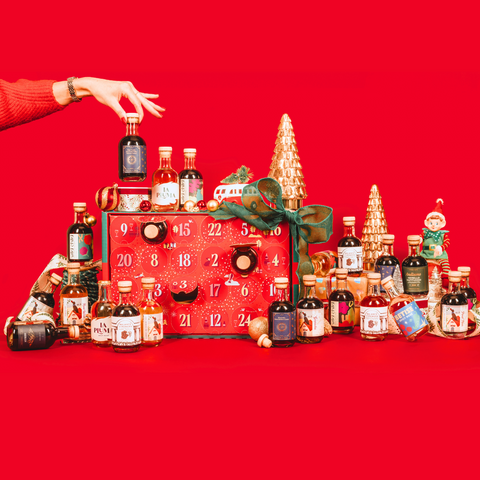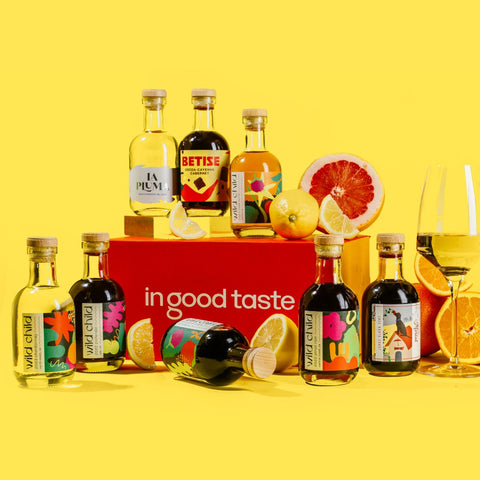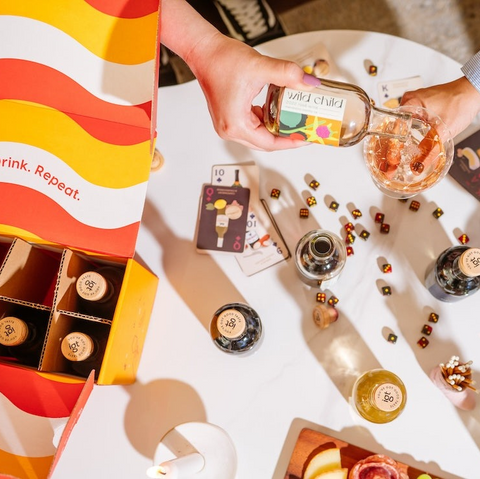Riesling - A Noble Choice
Riesling is the name of a white grape and wine variety discovered by farmers in Rhine, Germany. Loved for its orchard flavors of apricot, nectarine, and pear, Riesling features a strong floral aroma and flavor profiles ranging from fruity and sweet to crisp and dry. In short, Riesling is a white wine that has something for everyone.
History of Riesling
One of the first references to Riesling occurred in 1435, when it was listed in the storage inventory of German Count John IV of Katzenelnbogen. Since its noble beginnings, Riesling has been a favorite of wine connoisseurs and collectors because of its extremely long storage life compared to other wines. Due to the high acidity levels in Riesling, it can be stored in barrels for over 100 years!


Is Riesling a Varietal Wine or a Wine Blend?
Riesling is primarily a varietal wine because it loses much of its character when combined with other grapes. However, there is one notable exception. In the Alsace region of France, winemakers routinely blend Riesling with Gewurztraminer. The Gewurztraminer wine is usually dominant in the blend, with its intense aroma of rose or lychee lifting the Riesling’s more delicate tasting notes.

The Taste of Riesling
Depending on how it’s produced, Riesling can feature a wide variety of flavors. While you may notice everything from syrupy-sweet fruitiness to crisp mineral dryness, the traditional tasting notes are peach, pear, apple, apricot, and other “orchard” type flavors.
Botrytized Riesling wines (grown with the fungus Botrytis cinerea) tend to be sweet on the palate, but most Rieslings would be classified as dry or off-dry. Typically, dry Riesling wines tend to be lighter in color, while sweet Rieslings have a slightly darker golden or yellow hue.

Riesling Around the World
Riesling grapes are often “terroir-expressive,” meaning that the specific notes they express represent the exact soil and climate conditions they were grown in. Depending on the wine-growing region, Riesling aromas range from fruity to floral. The first notes you smell with a Riesling glass in your hand will be intense, highly-expressive aromas of citrus or orchard fruits.
As Riesling is often aged for decades, the wine in those barrels acquires a strong note of petrol. Believe it or not, this hint of petrol is a mark of a finely-aged and more desirable wine. (We know it sounds strange—but trust us.) It is also a signature of Riesling grapes grown in warmer New World climates (think outside Europe), whereas grapes grown in cooler Old World climates (within Europe) lack the petrol notes.
Today, Riesling wine is often produced in these regions:
- Alsace region in the Rhine River Valley in northeastern France
- Clare and Eden Valleys in South Australia
- Washington State and the Finger Lakes region in the USA
- Austria
Riesling Serving Instructions
The ideal Riesling serving temperature is between 45 to 50 degrees Fahrenheit. Chilling it in your refrigerator will usually keep it a little cooler than this, so letting it sit at room temperature right before serving should yield the right flavor profile.
Riesling also has its own special glass to drink out of that balances the high acidity and residual sugar content. Known simply as a Riesling glass, it features a smaller bowl and a smaller rim to send each sip toward the back of the tongue instead of overwhelming the front tastebuds with the wine’s sweetness. Of course, if you don’t have a Riesling glass on hand (which is totally understandable), the second-best option would be a traditional white wine glass.

Related: Chardonnay Wines
How to Drink Riesling
To properly sip your Riesling, follow the See. Swirl. Smell. Sip. Savor method.
See. Start with a glance at your Riesling’s label. Learning the winemaker and vintage will make it easier to remember this wine if it moves onto list of favorites. Next, take note of the wine’s clarity and color. Quality wine should never be cloudy, so make sure yours is clear.
Swirl. Here’s your chance to get a little fancy. Swirl the wine around in your glass to aerate it. This sophisticated swirl is more than high-society pageantry. It aerates the wine, opening up the natural aromas and enhancing your overall enjoyment.
Smell. Raise the glass to your nose, and inhale deeply. Your Riesling should have a pleasant fruity aroma, but you may also pick up hints of jasmine or honeysuckle. While the scents may be diverse, the wine should never smell musty or vinegary. These smells are unfortunate signs that the wine may have spoiled during storage.
Sip. At last, the moment you and your tastebuds have been waiting for! Take a small sip, enough to swish around in your mouth. Allow the Riesling to coat your tongue before swallowing.
Savor. Even after you’ve swallowed the first sip, you’ll probably pick up additional flavors and aromas. The better the wine, the more complex the finish should be. Now, with the stage set, you’re ready to enjoy the rest of your glass.
What To Pair with Riesling
Riesling wines pair well with spicy Indian and Asian cuisines due to their acidity and sweetness. They also go nicely with meats like duck, bacon, and chicken. For seafood pairings, shrimp and crab are some of the most popular Riesling pairings.
Thanks to its natural sweetness, Riesling also goes great with strong spice flavors like cayenne pepper, ginger, clove, and cinnamon. If you’re going to enjoy your wine with fresh veggies, you can’t go wrong with bell peppers, carrots, and a full glass of dry, fragrant Riesling. The freshness of that pairing just might make the appetizer the best part of your meal!









